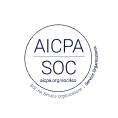Accessibility
Accessibility is the practice of designing and developing digital products that everyone, including people with disabilities, can access and use.
Share
Get Started Now
Contact SalesAccessibility is an increasingly important aspect of websites, mobile apps, and other digital products. It's essential to design these products with an optimal user experience (UX) for everyone, including people with disabilities.
What is accessibility?
Accessibility refers to the design and development of products, services, environments, or digital content that everyone, regardless of their disabilities or limitations, can easily access and use. It allows individuals with diverse abilities — including visual, physical, cognitive, or neurological impairments — to perceive, understand, navigate, and interact with information and functionalities effectively.
Why is accessibility important?
Accessibility's significance lies in its fundamental principle of inclusivity. By prioritizing accessibility in design, organizations create environments and products that cater to a broader audience. This facilitates equal opportunities and participation for all individuals.
Many countries worldwide have enacted legislation or adopted standards to guarantee web accessibility for individuals with disabilities. Some countries with such regulations or guidelines include:
- United States: The Americans with Disabilities Act (ADA) and Section 508 of the Rehabilitation Act require federal agencies to make their electronic and information technology (IT) accessible to people with disabilities. Additionally, Title III of the ADA covers accessibility in places of public accommodation, including websites.
- European Union: The E.U. Web Accessibility Directive mandates that public sector websites and mobile apps meet certain accessibility standards.
- United Kingdom: The U.K. has regulations, including the Equality Act 2010 and Public Sector Bodies (Websites and Mobile Applications) Accessibility Regulations 2018, that require public sector websites to meet specific accessibility standards.
- Australia: The Disability Discrimination Act 1992 and the Disability Standards for Accessible Public Transport include provisions for web accessibility, aiming to ensure equal access to information and services for individuals with disabilities.
- Canada: Various Canadian provinces have guidance addressing web accessibility. The Accessible Canada Act, the 2011 Standard on Web Accessibility, and the Employment Equity Act address the matter on a federal level.
Accessibility best practices
Implementing these practices fosters an inclusive digital environment. Breaking accessibility barriers empowers individuals of all abilities to access information, communicate effectively, and engage with products and services seamlessly. To achieve optimal accessibility, there are several best practices that design teams can follow.
1. Use clear and consistent design
The developer should utilize clear layouts, easy-to-read fonts, and consistent platform navigation. They should organize content locally, aiding users in understanding and navigating the information easily.
2. Provide alternative text for images
The publisher should include descriptive alternative text for images, which enables individuals using screen readers or those with visual impairments to comprehend the text of the image.
3. Allow keyboard accessibility
The developer should design all functionalities and interactive elements so that users can operate them using a keyboard alone. This benefits individuals with motor impairments who may not use a mouse.
4. Include captions and transcripts
The publisher should incorporate captions for multimedia content and provide transcripts for audio and video files. This helps users who are deaf or hard of hearing and those who prefer text-based content.
5. Consider color and contrast
The designer should maintain sufficient color contrast between text and background to aid users with visual impairments or color blindness to read and comprehend content.
6. Use flexible text sizes
The users should be able to adjust text sizes without compromising content layout or functionality. This is particularly advantageous for individuals with visual impairments who may require larger text sizes.
7. Include descriptive link text
The publisher should use descriptive and meaningful text for hyperlinks instead of generic phrases like "click here." This assists screen readers in understanding the purpose of the link.
8. Optimize video and audio player controls
The developer should ensure that controls for playing, pausing, and adjusting volume are easily accessible and operable for motor-disabled users.
9. Enable error handling and feedback
The developer should provide clear and descriptive error messages with suggestions for resolution. This can assist users in correcting mistakes, thereby benefiting individuals with cognitive disabilities.
10. Provide regular accessibility testing and gather user feedback
On a regular, ongoing basis, teams should conduct accessibility testing and usability tests with individuals who have diverse disabilities. By incorporating user feedback, an organization can continually improve accessibility features.
Accessibility is essential
Accessibility is not merely a checklist but a commitment to embracing diversity and enabling everyone, irrespective of their abilities, to access and engage with content and services equitably. It's a continuous journey that demands dedication, empathy, and a proactive approach to create an inclusive society where everyone can participate, contribute, and thrive without limitations.
For more information about UserTesting's commitment to accessibility, check out the following resources:
- How to create and measure digital accessibility
- Accessibility testing: tips and best practices from industry leaders
- Free guide: Accessibility for Digital Experiences 101
- Digital accessibility requirements: who, what, where, and when
- Testing the usability of sound
- What do UX designers need to know about accessibility?


